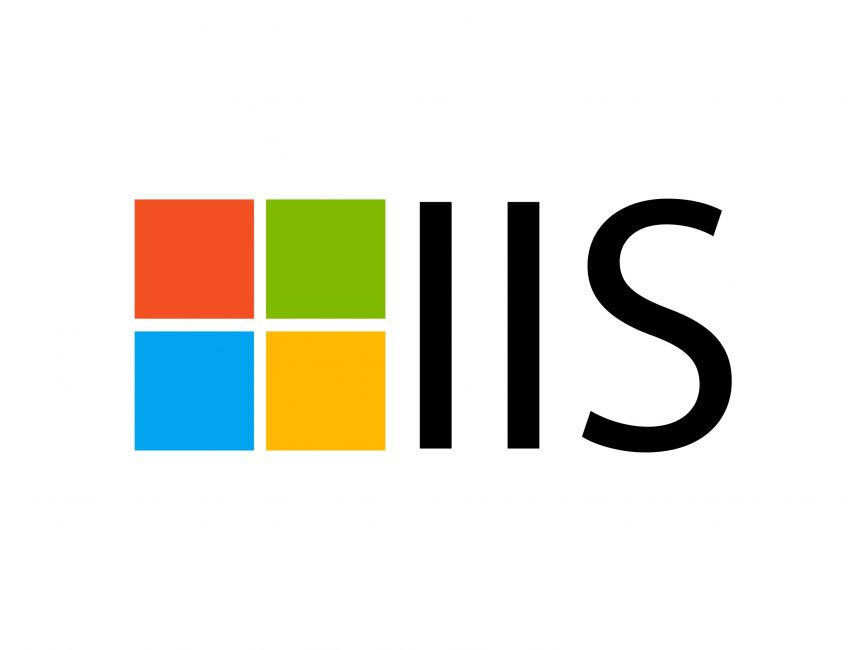The key to enabling IIS real-time logging is to configure the correct log format and location and ensure that the service is running properly. 1. Confirm that the IIS logging function is installed, and check "Log Recording Tool" when adding roles and functions in the server manager; 2. Configure site log settings, select W3C format, specify log paths, and set scrolling methods, while ensuring that the IIS account has write permissions; 3. View the logs in real time can be continuously refreshed through the text editor or implemented using PowerShell's Get-Content -Wait command; 4. Pay attention to the impact of performance and disk space. It is recommended to clean the logs regularly or cooperate with the archive strategy to avoid excessive resource consumption.

It is not difficult to enable IIS real-time logging. The key is to configure the correct log format and location and ensure that the service is running normally. This feature is very useful if you need to view real-time access, troubleshoot problems, or monitor traffic.

1. Confirm that the IIS log function is installed
Before you begin, make sure that the logging feature of IIS is installed on your server. Some systems may not check this option by default.
- Open Server Manager → Add Roles and Features
- When you go to the Server Role step, expand IIS → Web Server (IIS) → Logging Tools
- Make sure both IIS Logging and Logging Tools are checked
If it is not installed, follow-up operations can only be performed after reinstallation.

2. Configure site log settings
After entering IIS Manager, find the website or application you want to enable logging:
- Double-click to open the site and find the "Log" function
- Enable logging: Check "Enable logging" under "Log File"
- Select log format: usually use W3C format, which supports field output for easy analysis
- Set the log saving path: It is recommended to specify a separate directory, such as D:\Logs\IIS\
- Set log scrolling method: You can choose to generate new log files by day, size, etc.
Note: The log file path needs to ensure that the IIS running account has write permission, otherwise the log will not be generated.

3. How to view log files in real time
By default, IIS is written to the log in a buffered manner, which means you won't see the latest log entries right away. If you want to get close to "real time", you can try the following:
- Use Resource Monitor to observe log file changes
- Open logs and keep refreshing using a text editor such as Notepad or LogParser Studio in the log directory
- In conjunction with PowerShell command
Get-Content -Path "日志路徑" -Waitto simulate tail effect
For example:
Get-Content -Path "D:\Logs\IIS\u_ex240405.log" -Wait
This will continuously output newly written content, suitable for temporary debugging.
4. Pay attention to performance and disk space
Although real-time logging is useful, be aware of:
- Highly concurrent sites will generate a large amount of log data, and long-term opening may take up a lot of disk space.
- It is recommended to clean old logs regularly, or cooperate with log archiving strategies.
- If you only view occasionally, you can enable it when needed, turn off logging or adjust frequency after completion
Basically that's it. Enabling real-time IIS logging is not complicated, but there are several details that are easy to ignore, such as permissions, log refresh intervals, and storage path planning. As long as the configuration is in place, you can easily grasp the site access dynamics.
The above is the detailed content of How to enable real-time IIS logging?. For more information, please follow other related articles on the PHP Chinese website!

Hot AI Tools

Undress AI Tool
Undress images for free

Undresser.AI Undress
AI-powered app for creating realistic nude photos

AI Clothes Remover
Online AI tool for removing clothes from photos.

Clothoff.io
AI clothes remover

Video Face Swap
Swap faces in any video effortlessly with our completely free AI face swap tool!

Hot Article

Hot Tools

Notepad++7.3.1
Easy-to-use and free code editor

SublimeText3 Chinese version
Chinese version, very easy to use

Zend Studio 13.0.1
Powerful PHP integrated development environment

Dreamweaver CS6
Visual web development tools

SublimeText3 Mac version
God-level code editing software (SublimeText3)
 Configuring Request Limits and Connection Timeouts in IIS
Jul 08, 2025 am 12:36 AM
Configuring Request Limits and Connection Timeouts in IIS
Jul 08, 2025 am 12:36 AM
To limit the size of client requests, the maxAllowedContentLength parameter can be modified in web.config, such as setting it to 104857600 (100MB), and synchronizing the maxRequestLength of ASP.NET at the same time; to reasonably set the connection timeout time, it can be modified through the IIS manager or appcmd.exe command, with the default of 120 seconds, and the API scenario is recommended to set it to 30-90 seconds; if the request queue is full, you can increase MaxClientConn and QueueLength, optimize application performance, and enable load balancing to relieve stress.
 Configuring HTTP Response Headers for Caching and Security in IIS
Jul 07, 2025 am 12:23 AM
Configuring HTTP Response Headers for Caching and Security in IIS
Jul 07, 2025 am 12:23 AM
Configuring HTTP response headers in IIS to optimize cache and improve security can be achieved by setting cache-related headers and adding security response headers. 1. Set cache-related headers: By configuring the clientCache element in the web.config file, set the Cache-Control and Expires headers for static resources, for example, use cacheControlMaxAge to specify the cache time, and fine-grained control can also be performed for specific file types (such as .jpg), but avoid HTML page caching for too long. 2. Add security-related headers: Configure X-Content-Type-Optio through customHeaders in web.config
 Configuring Directory Browsing Permissions and Behavior in IIS
Jul 10, 2025 pm 02:08 PM
Configuring Directory Browsing Permissions and Behavior in IIS
Jul 10, 2025 pm 02:08 PM
ToenableandcustomizedirectorybrowsinginIIS,firstinstallandenabletheDirectoryBrowsingfeatureviaServerManagerandIISManager;next,customizetheappearanceusingheaderandfooterHTMLsnippets;thenconfiguredefaultdocumentstopreventunintendeddirectorylistings;fin
 Understanding the Difference Between IIS Virtual Directories and Applications
Jul 06, 2025 am 12:58 AM
Understanding the Difference Between IIS Virtual Directories and Applications
Jul 06, 2025 am 12:58 AM
VirtualdirectoriesandapplicationsinIISdifferinindependenceandconfiguration.1.Virtualdirectoriesactasaliasestoexternalcontent,sharingtheparentsite’sapplicationpoolandconfiguration,idealfororganizingstaticfileswithoutduplication.2.Applicationsrunindepe
 Configuring Shared Configuration for Multiple IIS Servers in a Web Farm
Jul 11, 2025 am 01:50 AM
Configuring Shared Configuration for Multiple IIS Servers in a Web Farm
Jul 11, 2025 am 01:50 AM
SharedconfigurationinIISallowsmultipleserverstouseacentralizedapplicationHost.configfile,ensuringconsistencyacrossawebfarm.1.Itenablesallserverstopointtoasharedconfigurationlocation.2.SetupinvolvesusingaUNCpath,enablingthefeatureinIISManager,andimpor
 Configuring Authentication Methods (Windows, Forms, Basic) in IIS
Jul 09, 2025 am 12:51 AM
Configuring Authentication Methods (Windows, Forms, Basic) in IIS
Jul 09, 2025 am 12:51 AM
Windows authentication is suitable for internal applications and is automatically authenticated through domain accounts; the steps are to open IIS Manager, select a site, enable Windows authentication, and ensure HTTPS is used. Forms authentication is suitable for custom login pages. You need to configure the login URL and timeout time in web.config, and develop a login page to verify users, encrypt your password and use HTTPS. Basic authentication is lightweight but not secure. It is only used when HTTPS is enabled. It needs to be enabled in IIS and cooperate with local or domain accounts. Password leakage is often caused by ignoring HTTPS.
 Securing IIS Against Common Web Vulnerabilities
Jul 05, 2025 am 12:17 AM
Securing IIS Against Common Web Vulnerabilities
Jul 05, 2025 am 12:17 AM
Strengthening IIS security requires five steps: 1. Disable unnecessary functions and services, such as WebDAV, FTP, etc.; 2. Close the default website and test pages, delete or prohibit access to useless script directories; 3. Configure request filtering rules to prevent illegal extensions, directory traversal and super long URLs, and use URLs to rewrite and hide the real path; 4. Enable HTTPS and force jumps, and set security response headers such as HSTS, X-Content-Type-Options; 5. Regularly update system patches, enable logging and use tools to analyze abnormal access behavior. Through these measures, we can effectively prevent common attack methods such as SQL injection, XSS, directory traversal, and improve the overall security of the server.
 Managing MIME Types for Specific File Extensions in IIS
Jul 08, 2025 am 02:07 AM
Managing MIME Types for Specific File Extensions in IIS
Jul 08, 2025 am 02:07 AM
MIME type is a mechanism by which the server identifies file content types, and missing or incorrect configuration can cause resource loading to fail. There are two main ways to manage MIME types with specific extensions in IIS: 1. Add or modify them through the IIS manager graphical interface; 2. Configure in the web.config file. Common MIME types that need to be added manually include .webmanifest, .woff2, .svg, .mp4 and .pdf. Notes include inheritance issues, IIS version differences and browser cache impact. Proper configuration is essential to ensure that modern web resources are loading properly.






